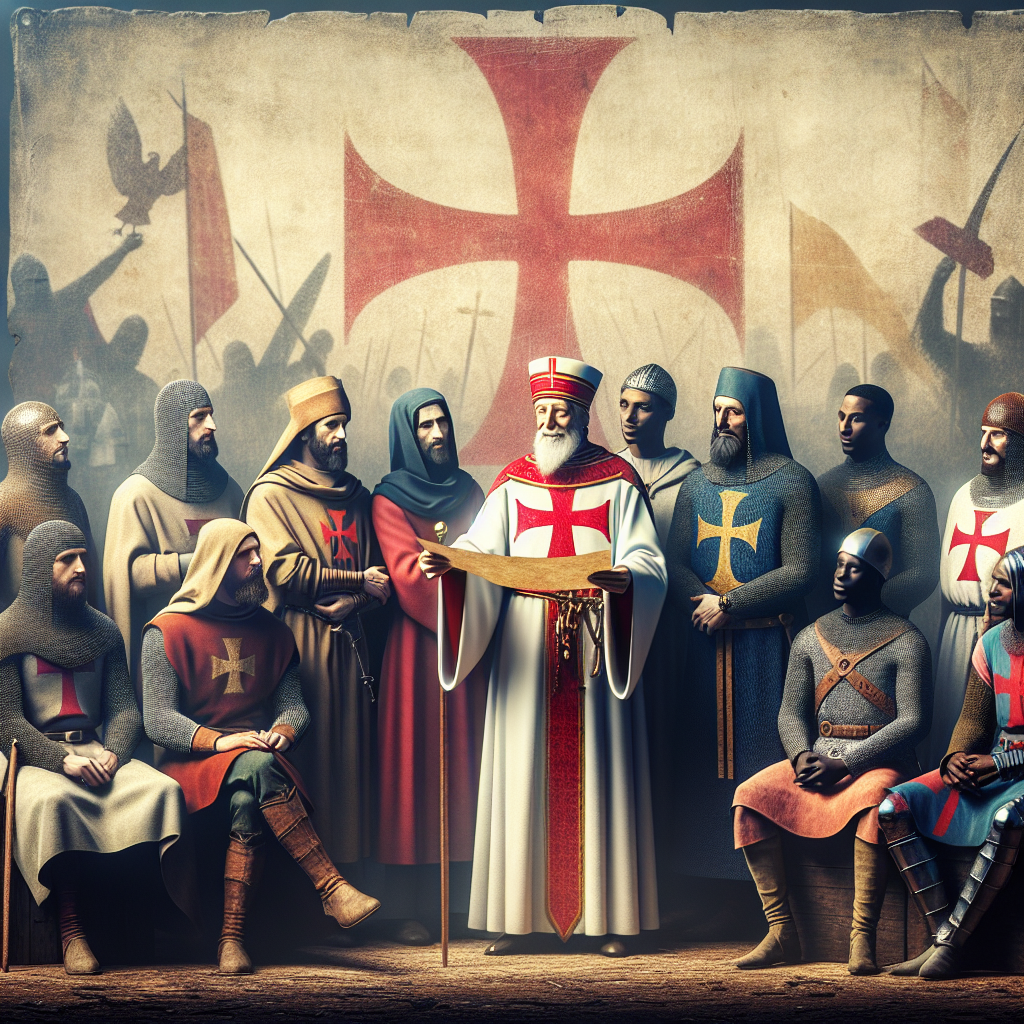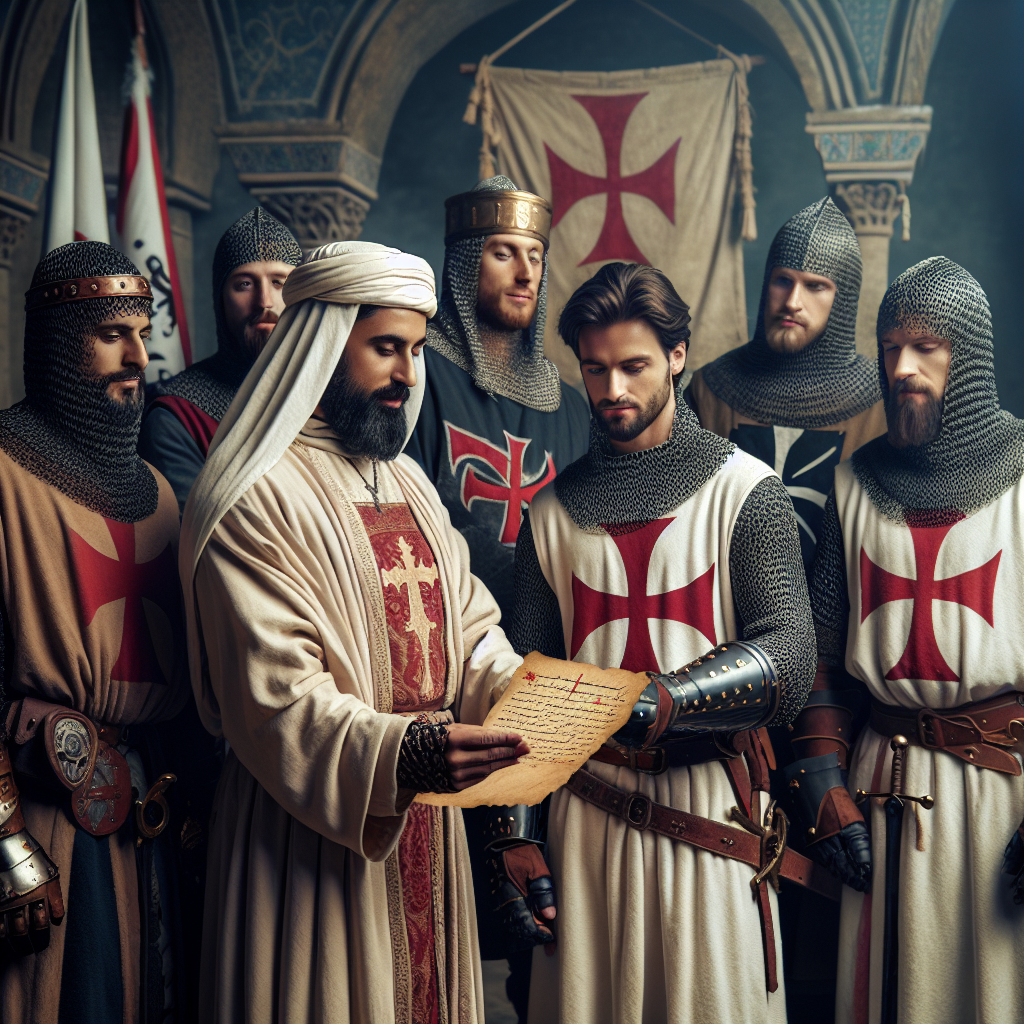
Grab a seat, my friend! Prepare yourself as we journey back to the medieval times, a period where chivalry, mystery, and faith intertwined. We are about to uncover the fascinating formation and the enigmatic founders of the Knights Templar, an illustrious organization that has both intrigued and mystified the world. Your curiosity about who set the foundations of this revered group is about to be satisfied. Fasten your seat belt, as we explore together the origins of the Knights Templar.

Background of the Middle Ages
The Middle Ages, also known as the Medieval period, stretches from the 5th through to the late 15th century. This time was marked by significant events, and among those were several religious conflicts that gave rise to the Crusades and the pilgrimages to the Holy Land. The continent was steeped in religious fervor, and many Christians embarked on these journeys as an act of piety or seeking spiritual healing and redemption.
The plights of pilgrims
The journey of the pilgrims, however, was fraught with hardship and danger. They faced long and grueling journeys across seas and arid landscapes. Their destination was the Holy Land, but often these pilgrims found themselves threatened by bandits and marauders. Furthermore, the political instability in these regions added to the challenges the pilgrims had to endure. It was amid these trying circumstances that the stage was set for the formation of a military order aimed at protecting these devotees – the Knights Templar.
The First Crusade and its aftermath
The First Crusade, an armed pilgrimage instigated by Pope Urban II in 1095, was primarily a response to the Muslim expansion that threatened Christian interests. The victory of this Crusade led to the establishment of four Crusader states in the East. However, these newly formed states lacked adequate defense, making them susceptible to attacks from Muslim forces. This escalating conflict urged the creation of a devoted band of knights, committed to safeguarding these territories and the pilgrims travelling to this Holy Land.
Formation of the Knights Templar
In the aftermath of the First Crusade, the Knights Templar was established as a monastic military order, tasked with the responsibility to protect Christian pilgrims in the East.
The founding members
The Knights Templar was established by a group of nine French knights, who were led by Hugues de Payens and Godfrey de Saint-Omer in 1119.
Role of Hugues de Payens and Bernard de Clairvaux
Hugues de Payens, a French knight, played a leading role in establishing the Knights Templar. Alongside him, Bernard de Clairvaux, a prominent theologian, was instrumental in drawing up their rule of life and gaining official recognition for the order from the Church.
The Papal endorsement
The Knights Templar received the full endorsement of the Pope through the Council of Troyes, held in 1129. This official recognition solidified their existence as a distinctive and revered order in Christendom.
Hugues de Payens: The First Grand Master
Hugues de Payens was an inspirational figure who played an essential role in the establishment and direction of the Knights Templar.
Early life of Hugues de Payens
The early life of Hugues de Payens is shrouded in mystery. Although details of his childhood are unknown, he emerged from relative obscurity, eventually becoming the first Grand Master of the Order.
Role in formation of the Order
Hugues de Payens, along with his companions, took vows of poverty, chastity, and obedience. He played an instrumental role in forming the Knights Templar and served as the Order’s first Grand Master.
Leadership and contributions
Under Hugues de Payens’ leadership and guidance, the Knights Templar rose to prominence. He is credited with not only garnering the support of key figures such as King Baldwin II and Pope Honorius II but also with organizing and leading the Order during its formative years.
Bernard of Clairvaux: Spiritual Force Behind the Order
Bernard of Clairvaux was a significant spiritual influence for the Knight Templar’s formation and purpose.
Background and early life of Bernard
Born in a French noble family in 1090, Bernard joined the Cistercian monastic order and eventually became a prominent Christian scholar and the abbot of Clairvaux.
Relationship with Hugues de Payens
Having been childhood friends, Bernard proved to be a key ally to Hugues de Payens. He used his sway within the Church to advocate for the Knights Templar, helping them gain the recognition they needed to thrive.
His influence and vision for the Templars
Bernard envisioned the Knights Templar as holy warriors fighting for the glory of God and the defense of Christendom. His influence and religious standing significantly contributed to shaping the spiritual, militant, and monastic nature of the Order.

King Baldwin II of Jerusalem
King Baldwin II was pivotal in establishing the Templar’s order, offering them both recognition and a sacred piece of real estate.
His role in establishing the Order
Baldwin II, the King of Jerusalem, was instrumental in establishing the Knights Templar. Recognizing the need to protect the Christian territories in the East, he offered his support to the newly formed Order.
Offering the Temple Mount to the Templars
In a significant gesture, King Baldwin II provided the Templars with a headquarters located on the Temple Mount in Jerusalem, previously believed to be the site of the biblical Temple of Solomon.
Public recognition and approval of the Order
Through King Baldwin II’s assistance and his endorsement, the Templars received a degree of public recognition and approval that was unprecedented for such a fledgling order.
The Temple of Soloman: The Templar’s First Headquarters
The Temple Mount, where the Order set its initial headquarters, held immense spiritual significance and framed the identity of the Knights Templar.
Choice and significance of the location
The site chosen for the headquarters, known as the Temple of Solomon, was significant. The association with the ancient Temple and King Solomon bestowed upon the Templars a sacred aura, reinforcing their holy and militaristic mission.
Architectural and practical aspects
The large structure offered ample space for the Order’s activities and provided a strategic location for their operations. Many Templar knights lived and trained here, and it served as the staging point for many of their military campaigns.

The Rule of the Templars
The Rule of the Templars formed the basis on which they conducted themselves, inspired by Cistercian practices and shaped at the Council of Troyes.
Establishment by the Council of Troyes
In 1129, during the Council of Troyes, the first formal Rule of the Templars was established. This was a code of conduct that outlined the duties and behaviors expected of a Templar Knight.
Influence of Bernard of Clairvaux
Bernard of Clairvaux had significant input in designing the Rule. He insisted on a strict adherence to ideals of poverty, chastity, and obedience. He also encouraged the knights to lead simple lives, focusing on their dual responsibilities of devotion to God and defense of the Christendom.
Key principles and societal expectations
The Rule established the Templars as soldier-monks, bridging the religious and military spheres. It expected the knights to be simultaneously pious monks and fearless warriors, serving God and their cause with equal fervor.
Growth and Internationalization of the Templars
The Templars quickly expanded beyond Jerusalem and established a presence in many parts of Europe, becoming an international order.
Establishment of Templar houses across Europe
Throughout the 12th and 13th centuries, the Templars established houses known as preceptories across Europe. These became centers for recruitment, training, and farming.
Protection from local laws and taxes
With the backing of the Popes, the Templars were granted various privileges, including immunity from local laws and taxes. This enabled them to grow and operate independently, further strengthening their influence and reach.
Role of financial donations and land bequests
Wealthy patrons across Europe made significant donations and gifted lands to the Order. These bequests played a critical role in establishing the Templars as a powerful financial institution, even running their banking services.

Military Role and Campaigns of the Templars
As the Templar Order grew, so did its military role. They became a key player in defense and warfare during the Middle Ages.
Involvement and contributions to the Crusades
The Templars played a significant role in the subsequent Crusades following their establishment. They became a formidable military force, helping defend the Christian territories and leading assaults against Muslim forces.
Specific military campaigns and victories
From the capturing of Ascalon to the notorious Battle of Hattin, the Templars were involved in crucial military campaigns. Despite some significant setbacks, they won numerous battles and remained a steadfast symbol of Christian military might.
Effects on medieval warfare
The military tactics and fortifications of the Templars had a profound influence on medieval warfare. They were among the most disciplined and effective fighting units of their time.
Fall and Dissolution of the Knights Templar
Despite their service and power, the Templars came under intense scrutiny and criticism, leading to their eventual downfall.
Accusations and trials
By the early 14th century, rumors began circulating about the Templars’ secret rituals and heretical practices. In 1307, many Templars, including the Grand Master Jacques de Molay, were arrested and put on trial. On dubious evidence, many were found guilty of heresy and other charges.
Role of King Philip IV of France
The move against the Templars was largely instigated by King Philip IV of France. Heavily indebted to the Order, he seized upon the rumors and accusations as a pretext to move against them and wipe out his debts.
The last Grand Master and the end of the Order
Jacques de Molay, the last known Grand Master of the Knights Templar, was burnt at the stake in 1314. The Pope disbanded the Order, marking the end of the Templars. Despite their dissolution, the Knights Templar left a lasting legacy and continue to captivate the imagination of many, even today.













